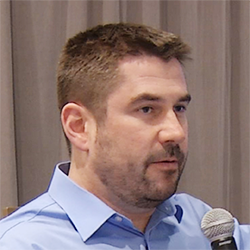Home » Dysautonomias » Adult Dysautonomias Part 3: Other Dysautonomias
Adult Dysautonomias Part 3: Other Dysautonomias
In this video Dr. Goldstein discusses other adult-onset dysautonomias.
We’re going to talk about an unusual condition called Takotsubo Cardiopathy. It’s a fascinating condition that occurs mainly in post-menopausal women. This is a form of emotional stress-induced catecholamine mediated acute, severe. heart failure.
The Takotsubo refers to the shape of a pottery, ceramic thing, that’s used for trapping octopuses. The Japanese investigator who saw and reported Takotsubo cardiopathy thought that the heart looked like a Takotsubo. I don’t know how you trap octopuses with the Takotsubo, I am guessing they’re just stupid and they put their heads in it and you can imagine, I don’t know, but anyway that’s a Takotsubo. What you see is that during systole when the heart is supposed to be contracting, all the parts of the heart are contracting. Instead, the base of the heart contracts – that’s how you get the neck of the Takotsubo, but the apex of the heart doesn’t contract – that’s bad. And this could look like a heart attack or severe acute heart failure, but if you measure levels of catecholamines, especially adrenaline, they’re sky high in people who have Takotsubo Cardiopathy; this is a reversible cause of acute heart failure. I have a feeling that people who survived Takotsubo Cardiopathy are susceptible to have future episodes, but I really don’t know.
The hallmark of baroreflex reflex failure is not orthostatic hypotension. The hallmark of baroreflex failure is excessive blood pressure variability. And these are these are tracings of blood pressure over 24 hours in three patients who had baroreflex failure as a late consequence of radiation treatment for lymphomas. In other words, as an adolescent, or something like that, person had lymphoma like Hodgkin’s, or something like that, and then had the usual treatments that include widespread irradiation including irradiation of the neck and then the person is cured. Until, years later the patient presents with extreme swings of blood pressure and Yoni Sharabi, who worked with me, discovered this association. He found that that people who had baroreflex failure and this blood pressure variability had a history of treatment with irradiation of the neck years before. The concept is that radiation treatment causes inflammation and then scarring of the blood vessels. And remember the carotid sinus baroreceptors are at the crotch of where the internal and external carotid arteries are formed, they’re stretch receptors, and so if the baroreceptors are kind of encased in this pipe, the brain isn’t going to know when the blood pressure’s changed and so that’s the connection between excessive blood pressure variability and a history of irradiation of the neck. I thought it was a brilliant, brilliant discovery and I think it has been replicated since then. There are cases of what seems to be POTS, chronic fatigue, and so forth that are associated with bilateral adrenal medullary hyperplasia.
The adrenal gland is arranged kind of like a Bon-Bon. The inside, the medulla from the Latin word for marrow, is where adrenaline comes from. The outer part of the adrenal gland called the cortex, for the Latin word for rind or bark on a tree, is where steroids come from. There’s good reason to understand why in humans the adrenal gland has this interesting architectural arrangement.
I think that’s what you are seeing here most of this fluorodopamine derived activity is in the medulla. I don’t know what’s cause and what’s effect here. There’s something to consider in a patient who has orthostatic intolerance and high circulating levels of adrenaline. Spinal cord transection here is a high lesion, and you remember the vagus nerve is a cranial nerve, it’s coming from the brainstem. You’re not going to have a spinal cord transection that’s going to be high enough to involve the vagus nerve because you’d be dead. What that means is that in a patient with spinal cord transection, the vagus nerve is intact. But the sympathetic outflow, which is coming from the thoracolumbar spinal cord, that’s gone. So, this association between the cranial part of the parasympathetic nervous system, which is absolutely intact, and the sympathetic noradrenergic outflow, which is importantly regulating blood pressure. He also mentioned that he used colonic distention but in patients who have spinal cord injury or transection, I think a more common problem is paroxysmal hypertension upon filling of the bladder. This is called autonomic dysreflexia and the idea is that the transection is here. If you had input from the bladder going up this way, it’s possible that you could have something that looks like an axon reflex. Remember that QSART for the looking at the sympathetic cholinergic systems based on an axon reflex, you can think of sort of an analogous kind of thing here and as a result norepinephrine is released big-time and causes paroxysmal hypertension. It’s paroxysmal hypertension because the baroreflex is screwed up. The ability to modulate vascular tone by the sympathetic noradrenergic system has been disrupted. The baroreflex doesn’t exist, I mean it exists from the point of view of the vagus nerve but who cares, not from the point of view of sympathetic neurocirculatory regulation. So, in people with spinal cord injury, bladder distention is dangerous, and can cause severe and morbid hypertension.

Wolfgang Singer, MD
Associate Professor of Neurology
Mayo Clinic Rochester, MN































